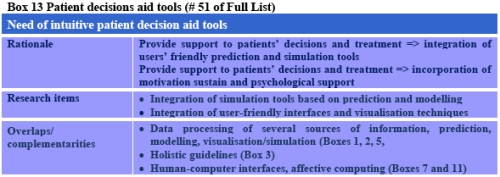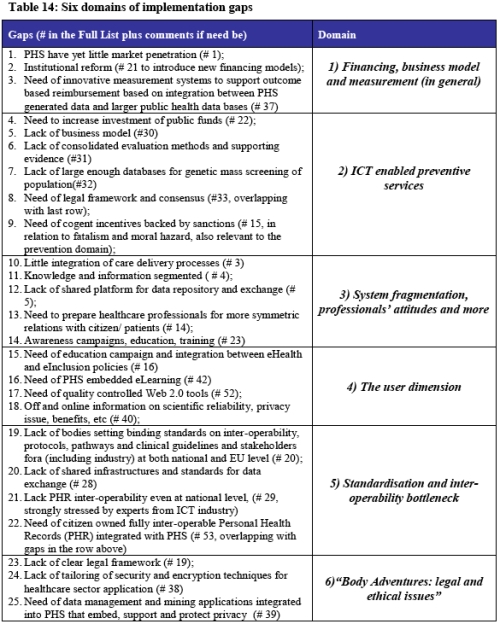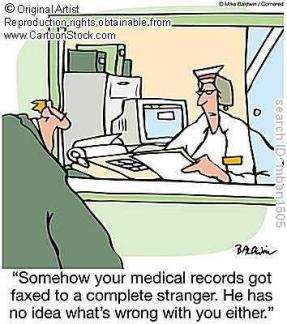Grid, Distributed and Cloud Computing Resources (GridResources.info) is a Subject Tracer™ Information Blog developed and created by the Virtual Private Library™. It is designed to bring together the latest resources and sources on an ongoing basis from the Internet for grid, distributed and cloud computing resources which are listed below. We always welcome suggestions of additional sites and resources to be added to this comprehensive listing and please submit by clicking here. This site has been developed and maintained by Marcus P. Zillman, M.S., A.M.H.A.; Internet expert, author, keynote speaker, and consultant. His latest white papers include Searching the Internet, Academic and Scholar Search Engines and Sources, and Knowledge Discovery Resources 2010. All of his Subject Tracer™ Information Blogs and his white papers are available from WhitePapers.us.His latest monthly column is available by clicking here. Subscribe to his free monthly Awareness Watch™ Newsletter. Learn more by clicking here.
GRID, DISTRIBUTED AND CLOUD COMPUTING RESOURCES
3TERA - Cloud Computing Platform
http://www.3tera.com/
Access Grid Project
http://www.AccessGrid.org/
Advanced Collaboration with the Access Grid
http://www.ariadne.ac.uk/issue42/daw/
Amazon Elastic Computer Cloud (Amazon EC2)
http://aws.amazon.com/ec2/
Aneka: A Software Platform for .NET-based Cloud Computing
http://www.gridbus.org/reports/AnekaCloudPlatform2009.pdf
Apache Hadoop Core - Easily Write and Run Applications That Process Vast Amounts of Data
http://hadoop.apache.org/core/
Appistry-Cloud Computing Middleware
http://www.appistry.com/
AppNexus
http://www.appnexus.com/
Artificial Intelligence Systems Distributed Computing Project
http://www.intelligencerealm.com/aisystem/system.php
BioGRID
http://www.thebiogrid.org/
BOINC - Open-Source Software for Volunteer Computing and Grid Computing
http://boinc.berkeley.edu/
Boomi AtomSphere(SM)
http://www.boomi.com/
Building the Info Grid
http://www.ariadne.ac.uk/issue45/buildinginfogrid-rpt/
caBIG™ - cancer Biomedical Informatics Grid
https://cabig.nci.nih.gov/workspaces/Architecture/caGrid/
CenterGate Research Group LLC
http://www.centergate.com/
CISS - Canadian Internetworked Scientific Supercomputer
http://www.cs.ualberta.ca/~ciss/
Clean Energy Distributed Project
http://cleanenergy.harvard.edu/go/
Climate Prediction
http://climateprediction.net/
CloudBerry Online Backup
http://www.cloudberrylab.com/default.aspx?page=cloudberry-backup
CloudBuddy - Your Virtual Desktop
http://www.mycloudbuddy.com/
Cloud Computing and Emerging IT Platforms: Vision, Hype, and Reality for Delivering Computing as the 5th Utility
http://www.gridbus.org/reports/CloudITPlatforms2008.pdf
Cloud Computing and High-Performance Computing
http://search.techrepublic.com.com/search/cloud+computing+and+high-performance+computing.html
Cloud Computing Expo
http://cloudcomputingexpo.com/
Cloud Computing Journal
http://cloudcomputing.sys-con.com/
Cloud Computing Resource Center
http://www.deitel.com/ResourceCenters/Programming/CloudComputing/tabid/3057/Default.aspx
Cloud Computing Resource, News and Support
http://www.dabcc.com/section.aspx?sectionid=12
Cloud Computing - Wikipedia
http://en.wikipedia.org/wiki/Cloud_computing
Cloudo - The Computer Evolved
http://www.cloudo.com/
CloudSim: A Novel Framework for Modeling and Simulation of Cloud Computing
Infrastructures and Services by Rodrigo N. Calheiros1, Rajiv Ranjan1, César A. F. De Rose, and Rajkumar Buyya
http://www.gridbus.org/reports/CloudSim-ICPP2009.pdf
Cluster Computing: The Journal of Networks, Software Tools and Applications
http://www.springerlink.com/link.asp?id=101766
Cluster Resources
http://www.clusterresources.com/
Community Grids Lab
http://www.communitygrids.iu.edu/
Condor Project - High Throughput Computing
http://www.cs.wisc.edu/condor/
Cosmogrid - Grid-enabled Computational Physics of Natural Phenomena
http://www.cosmogrid.ie/
D2OL - Drug Design and Optimization Lab - Discover Drug Candidates
http://www.d2ol.com/
DataMiningGrid Consortium
http://www.datamininggrid.org/
Deep Web Research
http://www.DeepWebResearch.info/
dhtmlxGrid - Ajax-enabled DHTML Grid with Rich Javascript API
http://www.dhtmlx.com/docs/products/dhtmlxGrid/
Digipede Technologies - Distributed Computing Solutions on Microsoft.NET Platform
http://www.digipede.net/
Distributed.net - Node Zero
http://www.distributed.net/
Distributed Computing Resources
http://www.jamesthornton.com/hotlist/distcomp.html
Distributed Generic Information Retrieval (DiGIR)
http://digir.sourceforge.net/
Distributed Search Engines
http://www.openp2p.com/pub/t/74
Distributed Systems - Google Code University
http://code.google.com/edu/parallel/index.html
Distributed Systems Laboratory at University of Chicago
http://dsl.cs.uchicago.edu/
Economy Grid (EcoGrid) Project
http://www.gridbus.org/~raj/ecogrid/
EGEE: Enabling Grids for E-science in Europe
http://egee-intranet.web.cern.ch/egee-intranet/gateway.html
Einstein@Home Distributed Computing Research Project
http://einstein.phys.uwm.edu/
EuroGRID
http://www.eurogrid.org/
ExcelGrid
http://www.gridbus.org/excelgrid/
eyeOS - Cloud Computing Operating System - Web Desktop - Web OS - Web Office
http://www.eyeos.org/
FightAIDS@Home Distributed Computing Research Project
http://fightaidsathome.scripps.edu/
Flexiscale
http://www.flexiscale.com/
Folding@Home Distributed Computing
http://folding.stanford.edu/
Force.com - Cloud Computing for the Enterprise
http://www.Force.com/
Ganglia - Scalable Distributed Monitoring System for Clusters, Grids and Clouds
http://ganglia.info/
Genome@home
http://www.stanford.edu/group/pandegroup/genome/
GGF Document Process - Final Documents (Global Grid Forum)
http://www.ggf.org/documents/final.htm
GIS Working Group - Global Grid Forum Information Services Area Group Charter
http://www-unix.mcs.anl.gov/gridforum/gis/
Gladinet Cloud - Delivering Cloud Services to Your Desktop and Operating System
http://www.gladinet.com/
GoGrid
http://www.gogrid.com/
Google™ App Engine - Run Your Web Apps On Google's Infrastructure
http://code.google.com/appengine/
Google™ Apps - Software-As-a-Service for Business Email, Information Sharing and Security
http://www.google.com/apps/intl/en/business/index.html
Google™ Directory - Cloud Computing
http://snipurl.com/ddrdr
Google™ Directory - Distributed Computing
http://snipurl.com/8jv3
Google™ Directory - Parallel Computing
http://snipurl.com/8jv6
GRACE - GRid seArch and Categorization Engine
http://www.ub.uni-stuttgart.de/grace/
GRID.ORG ™ - Grid Computing Projects
http://www.grid.org/
Grid Application and Deployment Projects
http://www-fp.mcs.anl.gov/~foster/grid-projects/
Grid Application Development Sofware Project (GrADS)
http://hipersoft.cs.rice.edu/grads/
GridBlocks
http://gridblocks.hip.fi/
GridCafe - The Place for Everybody To Learn About Grid Computing
http://www.gridcafe.org/
Grid Computing - IEEE Distributed Systems Online
http://dsonline.computer.org/gc/
Grid Computing Info Centre (GRID Infoware)
http://www.gridcomputing.com/
Grid Computing Planet
http://gridcomputingplanet.com/
Grid Forum
http://www.gridforum.org/
GridIron™ XLR8™
http://www.gridironsoftware.com/
GridLab: A Grid Application Toolkit and Testbed
http://www.gridlab.org/
Grid Market Directory (GMD)
http://www.gridbus.org/gmd/
Grid Markets Project
http://www.lesc.ic.ac.uk/markets/
GridMiner - Intelligent Grid Solutions
http://www.gridminer.org/
Grid Performance and Information Services (GGF)
http://www-didc.lbl.gov/GridPerf/
GridRepublic - Volunteer Computing
http://www.gridrepublic.org/
GridServer - Grid Computing for Business Critical Applications
http://www.datasynapse.com/
GridSim: A Grid Simulation Toolkit for Resource Modelling and Application Scheduling for Parallel and Distributed Computing
http://www.gridbus.org/gridsim/
GridSim Toolkit -- Resource Modeling and Scheduling Simultation
http://www.buyya.com/gridsim/
GRID'XY: IEEE/ACM Grid Computing International Workshop
http://www.gridcomputing.org/
GriPhyN - Grid Physics Network
http://www.griphyn.org/
Grub's Distributed Web Crawling Project
http://www.grub.org/
IBM Cloud Computing
http://www.ibm.com/ibm/cloud/
IEEE Distributed Systems Online
http://dsonline.computer.org/
IEEE Task Force on Cluster Computing
http://www.ieeetfcc.org/
iland Workforce Cloud
http://www.iland.com/solutions/workforce-cloud
Institute of Parallel and Distributed Systems (IPVS)
http://www.ipvs.uni-stuttgart.de/start/en
Internet-based Distributed Computing Projects
http://distributedcomputing.info
IRIS: Infrastructure for Resilient Internet Systems
http://iris.lcs.mit.edu/
JCGrid Web (Java Grid Computing)
http://jcgrid.sourceforge.net/
Journal of Grid Computing
http://www.springerlink.com/link.asp?id=111140
JXTA Project
http://www.jxta.org/
Lawrence Berkeley National Laboratory - Above the Clouds: A Berkeley View of Cloud Computing
http://www.lbl.gov/CS/
LHC@home Distributed Computing Research Project
http://lhcathome.cern.ch/
Manchester HEP Grid Working Group
http://www.hep.grid.ac.uk/grid/
Manjrasoft - Innovative Cloud and Grid Computing Technologies
http://www.manjrasoft.com/
Mersenne Prime Search
http://www.mersenne.org/
Microsoft Cloud Computing Tools
http://msdn.microsoft.com/en-us/vstudio/cc972640.aspx
Microsoft Live Mesh
https://www.mesh.com/Welcome/default.aspx
Milkyway@Home - Help Discover the Structures in the Milky Way Galaxy
http://milkyway.cs.rpi.edu/milkyway/
Mithral - Client-Server Software Development Kit (CSSDK)
http://www.mithral.com/products/cs-sdk/
MoneyBee
http://uk.moneybee.net/
MusicGrid - A Case Study in Broadband Video Collaboration by Hassan Masum, Martin Brooks, and John Spence
http://firstmonday.org/htbin/cgiwrap/bin/ojs/index.php/fm/issue/view/184
myGrid
http://www.mygrid.org.uk/
MyGrid - Open Source Grid and Grid Middleware
http://mygrid.sourceforge.net/
MysterNetworks - The Evolution of Peer-to-Peer
http://www.mysternetworks.com/
National Centre for eSocial Science (NCeSS)
http://www.ncess.ac.uk/
NetSolve GridSolve
http://icl.cs.utk.edu/netsolve/
Network World Fusion
http://www.nwfusion.com/
NeuroGrid - P2P Search
http://www.neurogrid.net/
NextGRID: Architecture for Next Generation Grids
http://www.nextgrid.org/
NIST Cloud Computing Definition
http://csrc.nist.gov/groups/SNS/cloud-computing/index.html
NMI-EDIT Consortium
http://www.nmi-edit.org/
NSF Middleware Initiative
http://www.nsf-middleware.org/
NVIDIA Tesla Personal Supercomputer
http://www.nvidia.com/object/personal_supercomputing.html
OGCE - Open Grid Computing Environments Collaboratory
http://www.ogce.org/
OneHub - Flexible Cloud to Share Files, Manage Projects and Online Collaboration
http://onehub.com/
Open Cluster Group
http://www.openclustergroup.org/
Open Data Grid
http://grid.okfn.org/
Open Grid Forum - Applied Distributed Computing
http://www.ggf.org/
OpenP2P.com
http://www.openp2p.com/
OpenSim - Open Grid Services
http://www.opensimulator.org/
Open Science Grid
http://www.opensciencegrid.org/
OSCAR : Open Source Cluster Application Ressources
http://www.csm.ornl.gov/oscar/
Parabon Computation - Internet Computing is Computing Outside the Box
http://www.parabon.com/
Parasitic Computing
http://www.nd.edu/~parasite/
Paremus - Redefining Enterprise Grid
http://www.paremus.com/
PCs Do Thousands of Years of Work By Jo Twist
http://news.bbc.co.uk/1/hi/sci/tech/4270241.stm
Peer to Peer Working Group - P2P WG - Internet2
http://p2p.internet2.edu/
PlanetLab
http://www.planet-lab.org/
Platform GRID Computing
http://www.platform.com/
Proteins@home Distributed Computing Research Project
http://biology.polytechnique.fr/proteinsathome/
Public Data Sets on AWS
http://aws.amazon.com/publicdatasets/
PVM: Parallel Virtual Machine
http://www.csm.ornl.gov/pvm/
QADPZ - Quite Advanced Distributed Parallel Zystem
http://qadpz.sourceforge.net/
Quadrics
http://www.quadrics.com/
RackSpace Cloud - Cloud Computing, Cloud Hosting and Online Storage
http://www.rackspacecloud.com/
Reservoir - Infrastructure for Cloud Computing
http://www.reservoir-fp7.eu/
rPath - A Pragmatic, Incremental Approach to Cloud Computing
http://www.rpath.com/corp/cloud-adoption-model?pi_ad_id=2947665472&gclid=CLzfgpmhk5kCFQITswodsmUaZw
RSS Cloud
http://www.RSSCloud.org/
SETI@home: Search for Extraterrestrial Intelligence
http://setiathome.berkeley.edu/
SmartFrog - Smart Framework for Object Groups
http://www.hpl.hp.com/research/smartfrog/
Spinhenge@home Distributed Computing Research Project
http://spin.fh-bielefeld.de/
Stratos Learning - Cloud Computing Education
http://stratoslearning.com/
Sun Grid Engine -- Data Sheet
http://wwws.sun.com/software/gridware/datasheet.html
Swarm - A Transparently Scalable Distributed Programming Language
http://code.google.com/p/swarm-dpl/
SZTAKI Desktop Grid
http://desktopgrid.hu/
TeraGrid
http://www.teragrid.org/
Terremark Enterprise Cloud
http://www.theenterprisecloud.com/
The Beowulf Cluster Site
http://www.beowulf.org/
The ChessBrain Network
http://www.chessbrain.net/
The Cloud, Cloud Computing, Cloud Hosting, and Cloud Services
http://www.mosso.com/
The DataGrid Project
http://eu-datagrid.web.cern.ch/
The Globus Alliance
http://www.globus.org/
The GRIDS Lab and the Gridbus Project
http://www.gridbus.org/
The Open GRiD Project
http://www.ecsl.cs.sunysb.edu/~maxim/OpenGRiD/
The Semantic Grid
http://www.semanticgrid.org/
ThinkCycle - Open Distributed Collaborative Design
http://www.thinkcycle.org/
TOP500 Supercomputer Sites
http://www.top500.org/
UNICORE Distributed Computing and Data Resources
http://www.unicore.eu/
UPnP™ Forum
http://www.upnp.org/
University of Florida - OCEAN Project
http://www.cise.ufl.edu/research/ocean/
VMLogix LabManager - Cloud Edition
http://www.vmlogix.com/VMLogix-LabManager-Cloud-Edition-Solution/
WaveMaker - Open Source Development Platform
http://www.WaveMaker.com/
Web Services Grid Application Framework (WS-GAF)
http://www.neresc.ac.uk/ws-gaf/
World Community Grid for Health Research
http://www.worldcommunitygrid.org
Worldwide Virtual Computer - Legion
http://www.cs.virginia.edu/~legion/
WS GRAM - Grid Resource Allocation and Management (GRAM)
http://www-unix.globus.org/toolkit/docs/3.2/gram/ws/
XtremWeb - Opensource Platform for Desktop Grids
http://www.XtremWeb.net
Yahoo! Directory Computer Science > Distributed Computing
http://dir.yahoo.com/Science/Computer_Science/Distributed_Computing/
ZDNet - Grid Resources
http://updates.zdnet.com/tags/grid.html
Current Subject Tracer™ Information Blogs:
Accessibility Resources
http://www.AccessibilityResources.info/
Agriculture Resources
http://www.AgricultureResources.info/
Artificial Intelligence Resources
http://www.AIResources.info/
Astronomy Resources
http://www.AstronomyResources.info/
Auction Resources
http://www.AuctionResources.info/
Biological Informatics
http://www.biologicalinformatics.info/
Biotechnology Resources
http://www.BiotechnologyResources.info/
Bot Research
http://www.botresearch.info/
Business Intelligence Resources
http://www.biresources.info/
ChatterBots
http://www.ChatterBots.info/
Data Mining Resources
http://www.DataMiningResources.info/
Deep Web Research
http://www.deepwebresearch.info/
Directory Resources
http://www.DirectoryResources.info/
eCommerce Resources
http://www.eCommerceResources.info/
Elder Resources
http://www.ElderResources.info/
Employment Resources
http://www.EmploymentResources.info/
Entrepreneurial Resources
http://www.EntrepreneurialResources.info/
Financial Sources
http://www.FinancialSources.info/
Finding People
http://www.FindingPeople.info/
Games Resources
http://www.GamesResources.info/
Genealogy Resources
http://www.GenealogyResources.info/
Grant Resources
http://www.GrantResources.info/
Green Files
http://www.GreenFiles.info/
Grid, Distributed and Cloud Computing Resources
http:/www.GridResources.info/
Healthcare Resources
http://www.healthcareresources.info/
Information Futures Markets
http://www.InformationFuturesMarkets.com/
Information Quality Resources
http://www.InformationQualityResources.info/
International Trade Resources
http://www.InternationalTradeResources.info/
Internet Alerts
http://www.InternetAlerts.info/
Internet Demographics
http://www.internetdemographics.info/
Internet Experts
http://www.internetexperts.info/
Internet Hoaxes
http://www.internethoaxes.info/
Intrapreneurial Resources
http://www.IntrapreneurialResources.info/
Journalism Resources
http://www.JournalismResources.info/
Knowledge Discovery
http://www.knowledgediscovery.info/
Military Resources
http://www.MilitaryResources.info/
New Economy Analytics, Resources and Alerts
http://www.NewEconomyAnalytics.com/
Outsourcing/Offshoring Information and Resources
http://www.OutsourcingOffshore.us/
Privacy Resources
http://www.PrivacyResources.info/
Reference Resources
http://www.ReferenceResources.info/
Research Resources
http://www.researchresources.info/
RestStress™
http://www.RestStress.com/
Script Resources
http://www.ScriptResources.info/
ShoppingBots
http://www.ShoppingBots.info/
Social Informatics
http://www.SocialInformatics.net/
Statistics Resources
http://www.statisticsresources.info/
Student Research
http://www.studentresearch.info/
Theology Resources
http://www.TheologyResources.info/
Tutorial Resources
http://www.TutorialResources.info/
World Wide Web Reference
http://www.WWWReference.info/
© 2010 Marcus P. Zillman, M.S., A.M.H.A.
Great list of Grid computing projects and information sources.




![Reblog this post [with Zemanta]](http://img.zemanta.com/reblog_a.png?x-id=2597a64b-ef66-4998-b70e-2167b418b78b)

